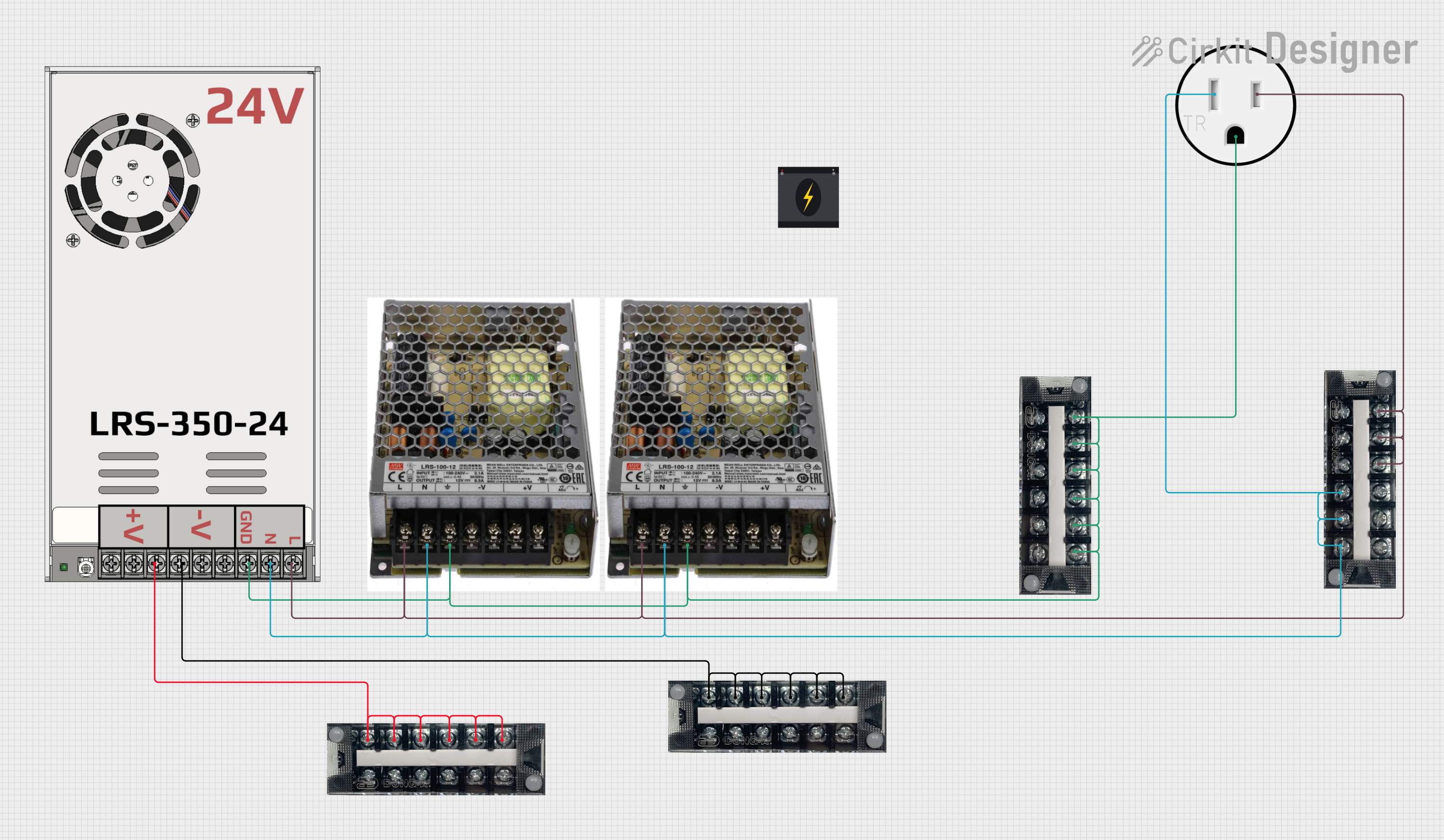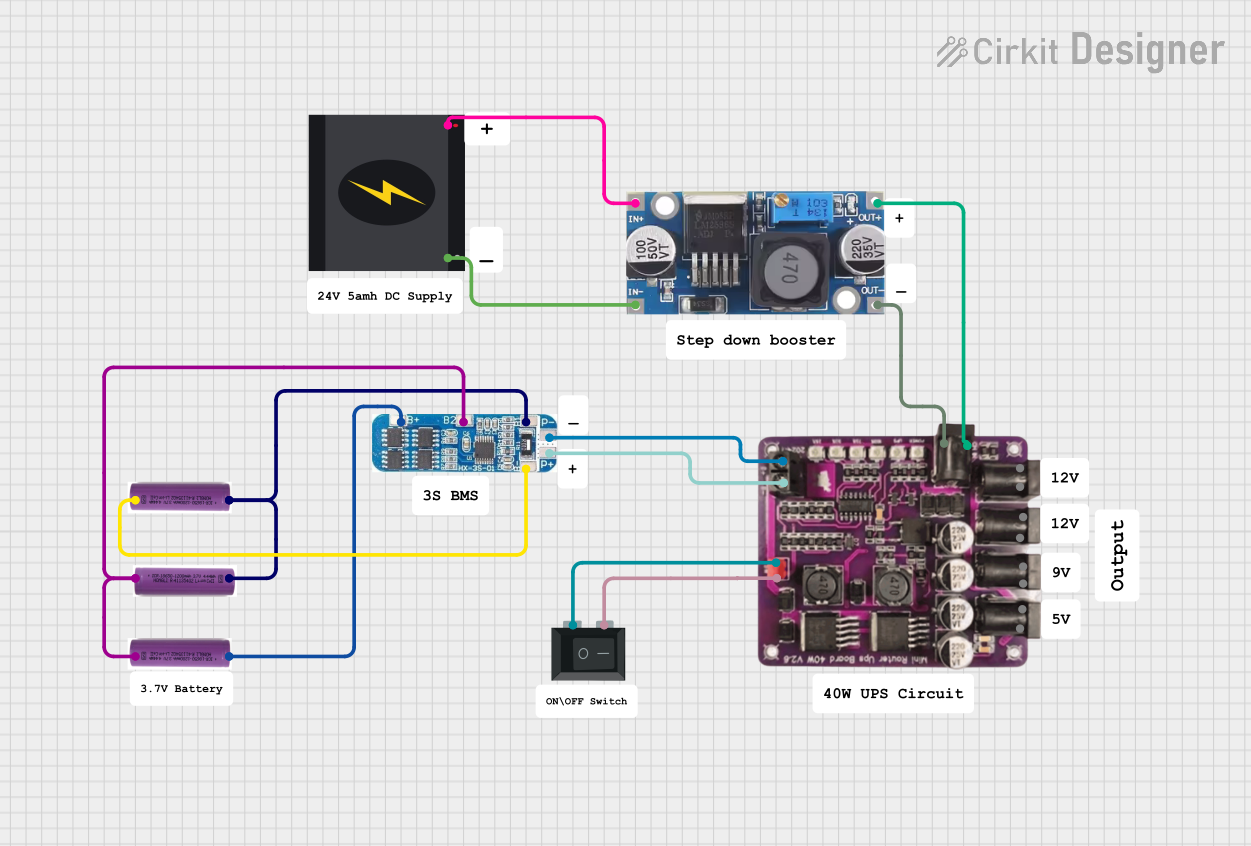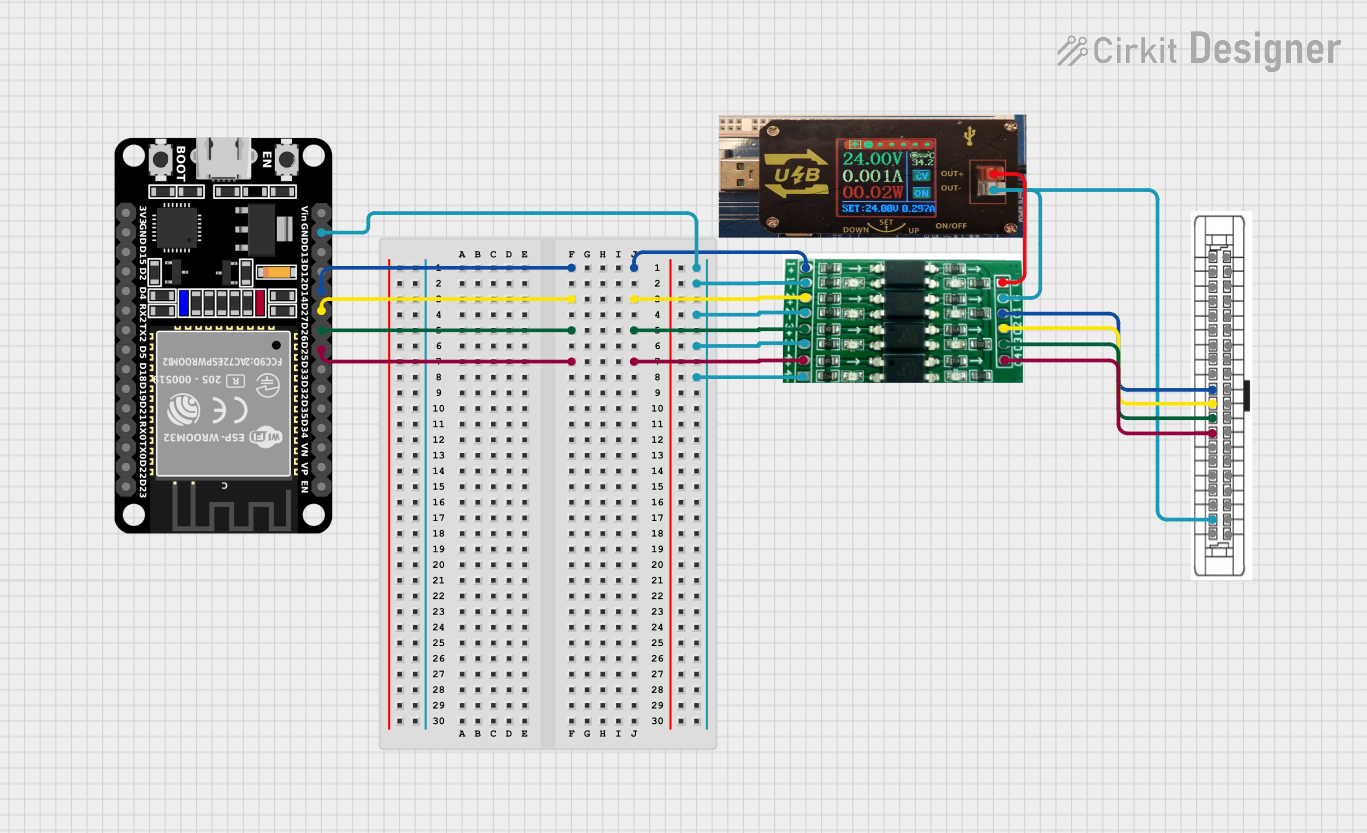
How to Use 24V PSU: Examples, Pinouts, and Specs

 Design with 24V PSU in Cirkit Designer
Design with 24V PSU in Cirkit Designer24V Power Supply Unit (PSU) Documentation
1. Introduction
The 24V Power Supply Unit (PSU), manufactured by Conor Curley, is a reliable and efficient device designed to convert AC mains voltage into a stable 24V DC output. This PSU is ideal for powering a wide range of electronic devices, industrial equipment, and circuits that require a 24V DC input. Its robust design ensures consistent performance, making it suitable for both hobbyist and professional applications.
Common Applications:
- Powering industrial control systems
- Driving DC motors and actuators
- Supplying power to LED lighting systems
- Providing power to Arduino-based and other microcontroller projects
- Charging 24V battery systems
- Laboratory and prototyping use
2. Technical Specifications
The following table outlines the key technical details of the 24V PSU:
| Parameter | Specification |
|---|---|
| Input Voltage Range | 100-240V AC, 50/60Hz |
| Output Voltage | 24V DC ± 1% |
| Maximum Output Current | 5A |
| Maximum Output Power | 120W |
| Efficiency | ≥ 85% |
| Ripple and Noise | ≤ 100mV |
| Operating Temperature | -10°C to +50°C |
| Storage Temperature | -20°C to +70°C |
| Protection Features | Overload, Overvoltage, Short Circuit |
| Dimensions | 150mm x 80mm x 40mm |
| Weight | 450g |
Pin Configuration and Descriptions
The PSU has the following input and output terminals:
| Pin/Terminal | Label | Description |
|---|---|---|
| 1 | L | Live AC input (100-240V AC) |
| 2 | N | Neutral AC input |
| 3 | GND | Earth/ground connection |
| 4 | +V | Positive 24V DC output |
| 5 | -V | Negative 24V DC output (ground) |
3. Usage Instructions
Connecting the 24V PSU to a Circuit
- Safety First: Ensure the PSU is disconnected from the mains power before making any connections.
- Input Connection:
- Connect the L terminal to the live wire of the AC mains.
- Connect the N terminal to the neutral wire of the AC mains.
- Optionally, connect the GND terminal to the earth wire for safety.
- Output Connection:
- Connect the +V terminal to the positive input of your load or circuit.
- Connect the -V terminal to the ground or negative input of your load or circuit.
- Power On:
- After verifying all connections, plug the PSU into the mains and switch it on.
- Use a multimeter to confirm the output voltage is 24V DC before connecting sensitive devices.
Important Considerations:
- Load Requirements: Ensure the total current draw of your load does not exceed the PSU's maximum output current (5A).
- Ventilation: Place the PSU in a well-ventilated area to prevent overheating.
- Polarity: Double-check the polarity of the output connections to avoid damaging your devices.
- Fusing: Consider adding a fuse on the input or output side for additional protection.
4. Example Application: Using the 24V PSU with an Arduino UNO
The 24V PSU can be used to power an Arduino UNO indirectly by stepping down the voltage to 5V using a DC-DC buck converter. Below is an example setup:
Required Components:
- 24V PSU
- DC-DC buck converter (24V to 5V)
- Arduino UNO
- Jumper wires
Circuit Diagram:
- Connect the +V and -V terminals of the PSU to the input of the DC-DC buck converter.
- Adjust the buck converter to output 5V DC using its onboard potentiometer.
- Connect the 5V output of the buck converter to the 5V pin of the Arduino UNO.
- Connect the ground of the buck converter to the GND pin of the Arduino UNO.
Sample Arduino Code:
// Example code to blink an LED connected to pin 13 of the Arduino UNO
// Ensure the Arduino is powered via the 24V PSU and a DC-DC converter
void setup() {
pinMode(13, OUTPUT); // Set pin 13 as an output pin
}
void loop() {
digitalWrite(13, HIGH); // Turn the LED on
delay(1000); // Wait for 1 second
digitalWrite(13, LOW); // Turn the LED off
delay(1000); // Wait for 1 second
}
5. Troubleshooting and FAQs
Common Issues and Solutions:
| Issue | Possible Cause | Solution |
|---|---|---|
| No output voltage | Loose or incorrect input connections | Verify AC input connections (L, N, GND). |
| Output voltage is not 24V | Load exceeds PSU capacity | Reduce the load to within 5A limit. |
| PSU overheats | Poor ventilation or high ambient temp | Ensure proper airflow around the PSU. |
| Device connected to PSU not working | Incorrect polarity or loose connection | Check output polarity and connections. |
Frequently Asked Questions:
Can I use this PSU to charge a 24V battery?
- Yes, but ensure the battery charging current does not exceed the PSU's maximum output current (5A). Use a charge controller for optimal performance.
Is the PSU suitable for outdoor use?
- No, this PSU is not weatherproof. Use it in a dry, indoor environment.
Can I connect multiple devices to the PSU?
- Yes, as long as the total current draw of all devices does not exceed 5A.
What happens if the PSU is overloaded?
- The PSU has built-in overload protection and will shut down to prevent damage. Reduce the load and restart the PSU.
6. Conclusion
The 24V Power Supply Unit (PSU) by Conor Curley is a versatile and reliable power source for a wide range of applications. By following the usage instructions and best practices outlined in this documentation, users can ensure safe and efficient operation of the PSU. For further assistance, refer to the troubleshooting section or contact the manufacturer.
Explore Projects Built with 24V PSU

 Open Project in Cirkit Designer
Open Project in Cirkit Designer
 Open Project in Cirkit Designer
Open Project in Cirkit Designer
 Open Project in Cirkit Designer
Open Project in Cirkit Designer
 Open Project in Cirkit Designer
Open Project in Cirkit DesignerExplore Projects Built with 24V PSU

 Open Project in Cirkit Designer
Open Project in Cirkit Designer
 Open Project in Cirkit Designer
Open Project in Cirkit Designer
 Open Project in Cirkit Designer
Open Project in Cirkit Designer
 Open Project in Cirkit Designer
Open Project in Cirkit Designer